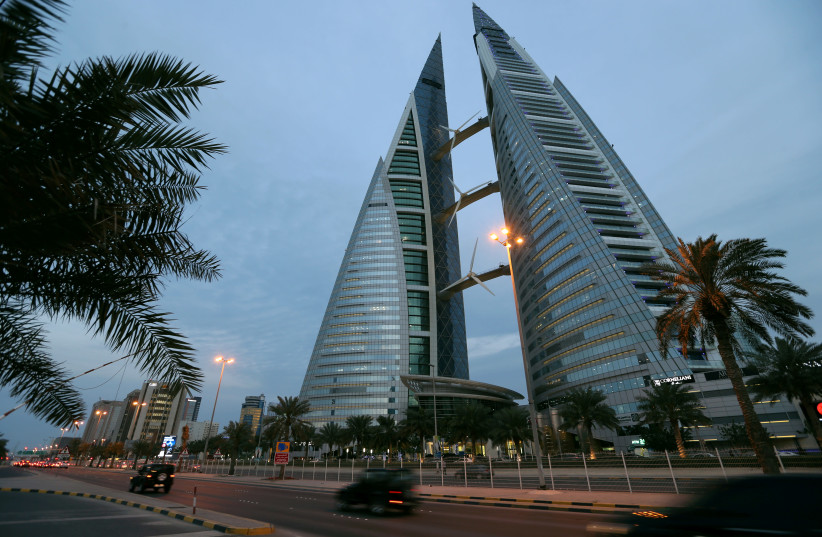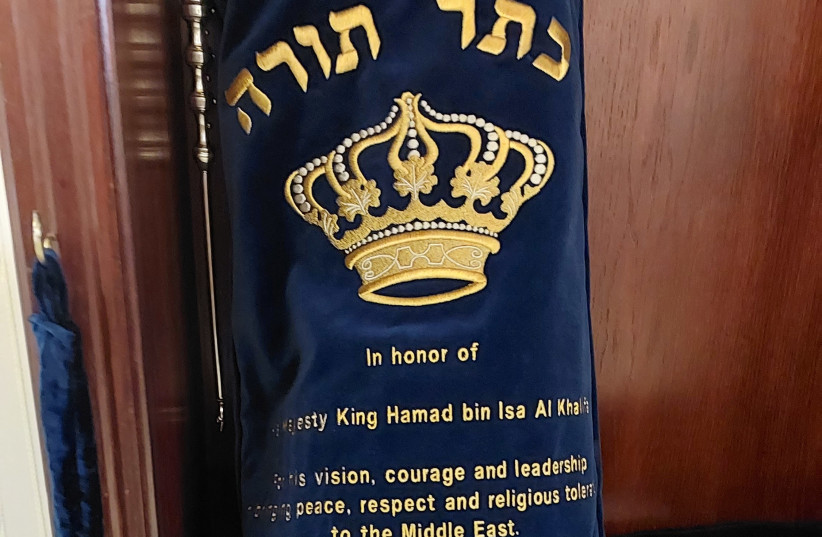MANAMA - The Abraham Accords have been good for this city’s tiny synagogue.
I was last in this synagogue - now called the House of Ten Commandments - on June 26, 2019, more than a year before the Abraham Accords.
Then President Donald Trump’s advisor and son-in-law Jared Kushner put together the Peace to Prosperity conference aimed at pushing forward economic ties between Israel and the Arab world, or at least that part of the Arab world that deigned to join the festivities (the Palestinians boycotted).
As part of the conference, the Bahranis allowed seven Israeli journalists into the country to cover the events, and the acceptance of this delegation was seen as a positive sign and a move toward normalization. The last time Israeli journalists were formally allowed into the country was a quarter of a century earlier.
On the morning of the first full day of the conference, a couple of the journalists and some observant members of the American delegation - such as Trump envoy Jason Greenblatt - gathered in the synagogue for morning minyan.

First minyan in the synagogue in over 50 years
It was the first minyan in the synagogue in over 50 years, and a glance at the synagogue's interior could have given that fact away.
One entered the synagogue through a metal door; metal shutters folded over windows; a plain blue ark cover was draped over an ark which housed a menorah, not a Torah; there was no cover on the bima; prayer books and chumashim in abundance did not grace the shelves. Just a few steps from the city’s bustling souk, the unmarked synagogue felt like little more than an old school room whose time had long passed.
That is why that morning’s minyan in the synagogue seemed significant.
Just like that, Jewish ritual life descended on the city, if only for a moment. That moment seemed pregnant with meaning, the reason why afterward the 15 men who made up the minyan danced around the bimah singing Am Yisrael Chai (“The people of Israel lives”) just a stone’s throw away from Iran in a Gulf country which at that time did not have formal relations with Israel.
A brief video clip of the moment went viral.
The synagogue has shed its forsaken feel
Fast forward nearly four years, and the synagogue has shed its forsaken feel.
A sign outside the white, unpretentious building reads “Bahrain Synagogue” in English, and “House of Ten Commandments” in Arabic and Hebrew.
You enter the synagogue through a wooden door and can look outside through arch-shaped wooden windows approximating the synagogue's design when it was built in the 1930s. The Ark cover is blue velvet and dedicated, in Hebrew, to the community’s late rabbi Shimon Cohen who was instrumental in building the synagogue.
The bima cover now has a velvet cover dedicated - again in Hebrew - to the peace between Bahrain and Israel, and the ark in this Sephardi synagogue now holds an Ashkenazi Torah sporting a cover that bears the following inscription: “In honor of His Majesty King Hamad bin Isa Al Khalifa for his vision, courage and leadership in bringing peace, respect and religious tolerance to the Middle East. June 25, 2019, Jared Kushner.”
The Torah scroll was presented to the king a few weeks before the Abraham Accords were signed in September 2020, but commissioned a year earlier by Kushner at the Peace to Prosperity conference.

Asked why the sole Torah scroll in the synagogue serving a Sephardi community is an Ashkenazi one, Houda Nonoo, formerly Bahrain’s ambassador to Washington and a pillar of the community, answered simply: “Because Kushner is Ashkenazi.”
Above the ark hangs an eternal light, a synagogue accouterment not there before, as well as the Ten Commandments written in Hebrew and Arabic - not something seen in many, if any, synagogues around the world.
The bookshelves are somewhat incongruously lined with Hebrew/English ArtScroll prayer books and chumashim, as well as a set of ArtScroll’s Hebrew/English Schottenstein Talmud - all signs that the shul is meant as much for ex-pats and visitors as for the indigenous Jewish community. This gives the synagogue a distinctly Mid-Atlantic, rather than Middle East, feel. On the bima, however, are couple of Hebrew/Arabic prayer books.
History of the Jewish community in Manama
The tiny Jewish community in Manama dates back to the late 1800s when a group of Jews from Baghdad set sail for India and stayed in Bahrain. The community peaked at some 1,500 in the 1930s.
Rioters ransacked and burned the synagogue following the UN Partition Plan in 1947, and the country’s Torah scroll was stolen, only to be returned - in damaged condition - a number of years later.
The community dwindled to some 500 before the 1967 Six-Day War and shrank even further after riots that took place at the time.
Today, according to Nonoo, there are some 36 local Jews and another 75 Jewish ex-pats of whom the community knows.
Nonoo said there are now services in the synagogue every Shabbat morning, though there is not always a minyan. It depends on who is in town and whether there are tourists. But that itself is quite a turnaround from that minyan in the summer of 2019, the first minyan in the synagogue in her lifetime.
